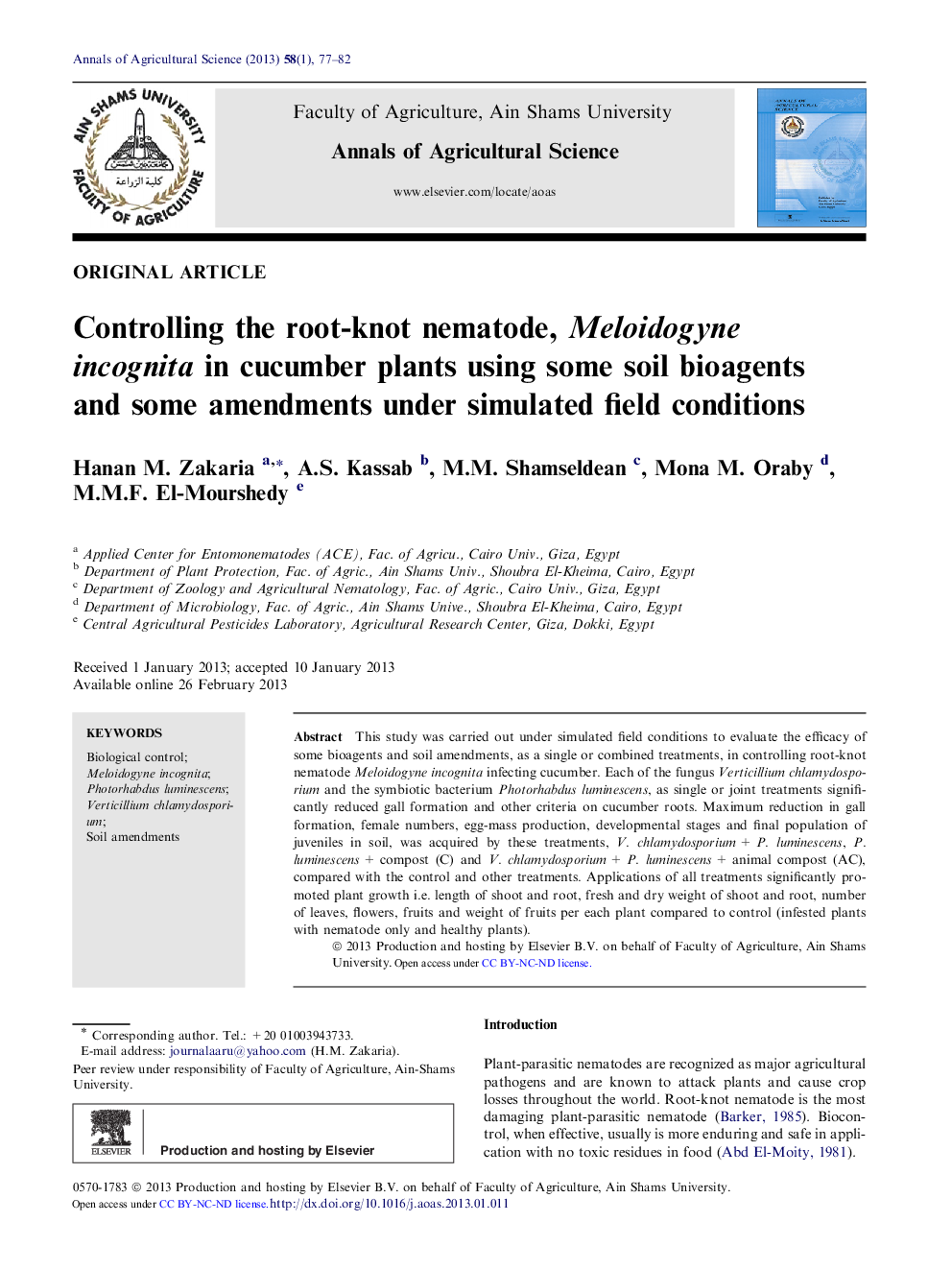| Article ID | Journal | Published Year | Pages | File Type |
|---|---|---|---|---|
| 4492910 | Annals of Agricultural Sciences | 2013 | 6 Pages |
This study was carried out under simulated field conditions to evaluate the efficacy of some bioagents and soil amendments, as a single or combined treatments, in controlling root-knot nematode Meloidogyne incognita infecting cucumber. Each of the fungus Verticillium chlamydosporium and the symbiotic bacterium Photorhabdus luminescens, as single or joint treatments significantly reduced gall formation and other criteria on cucumber roots. Maximum reduction in gall formation, female numbers, egg-mass production, developmental stages and final population of juveniles in soil, was acquired by these treatments, V. chlamydosporium + P. luminescens, P. luminescens + compost (C) and V. chlamydosporium + P. luminescens + animal compost (AC), compared with the control and other treatments. Applications of all treatments significantly promoted plant growth i.e. length of shoot and root, fresh and dry weight of shoot and root, number of leaves, flowers, fruits and weight of fruits per each plant compared to control (infested plants with nematode only and healthy plants).
